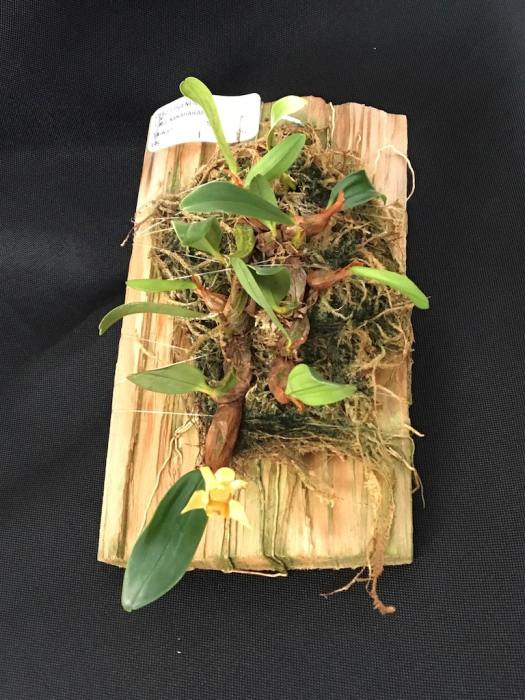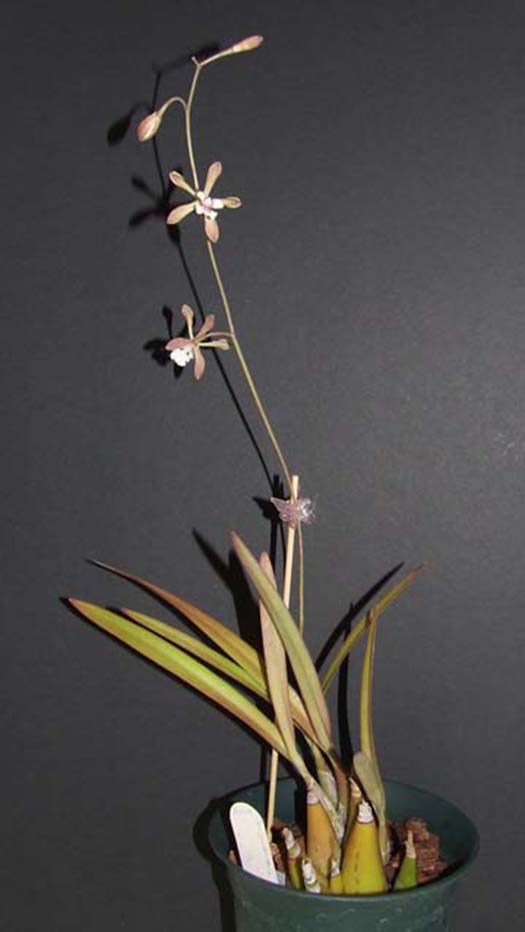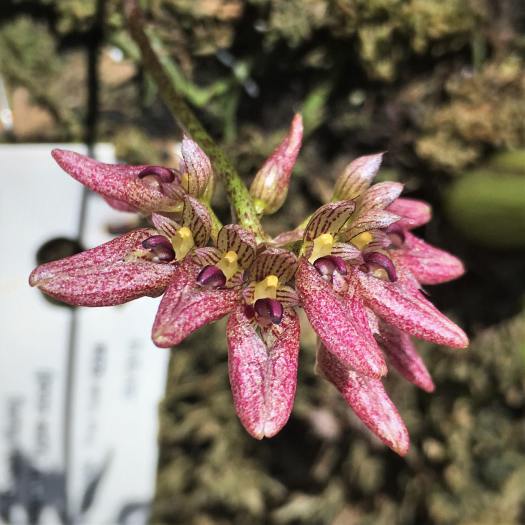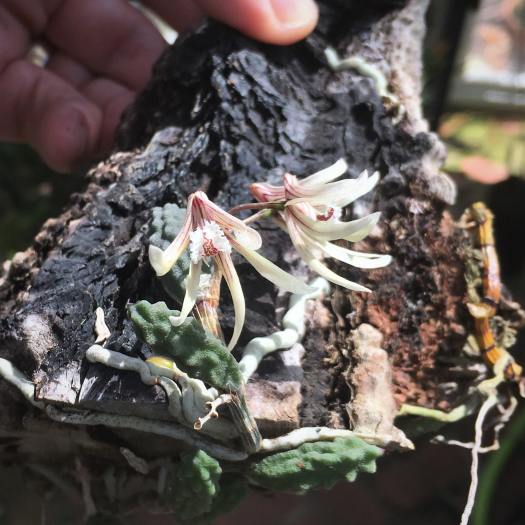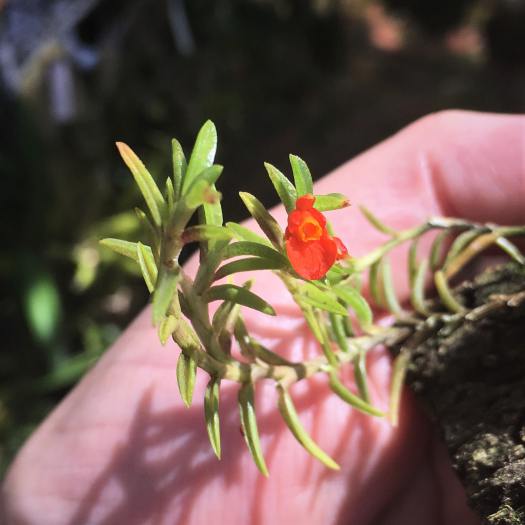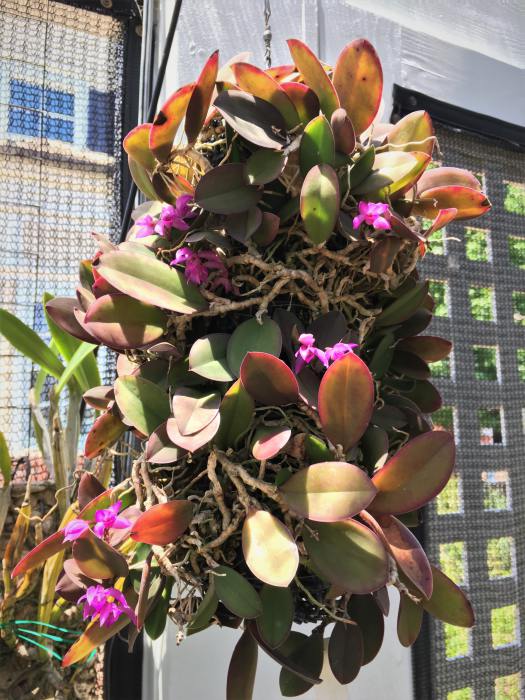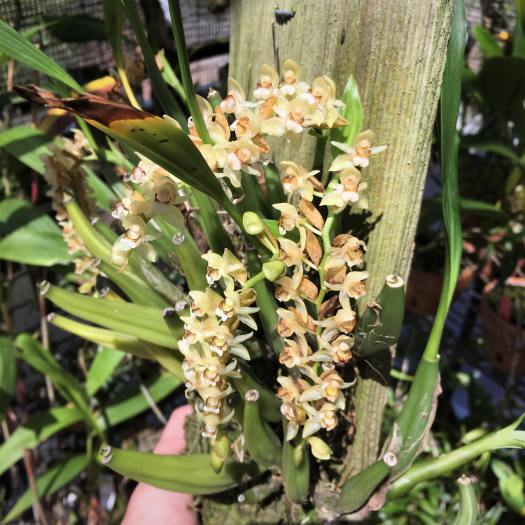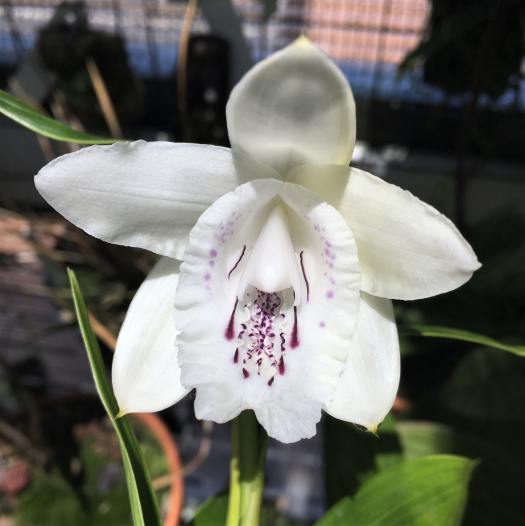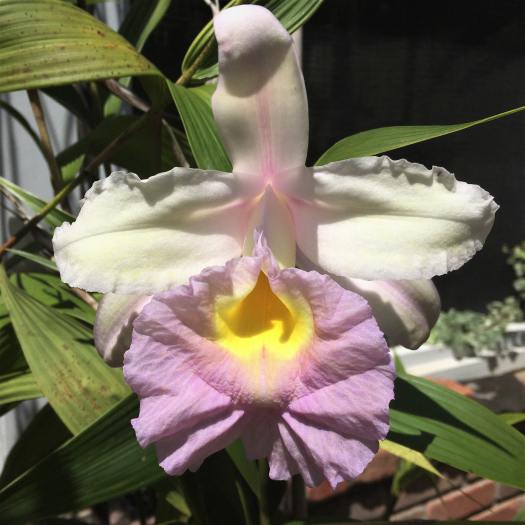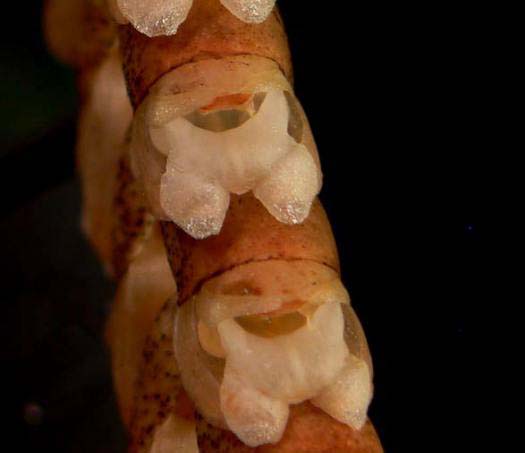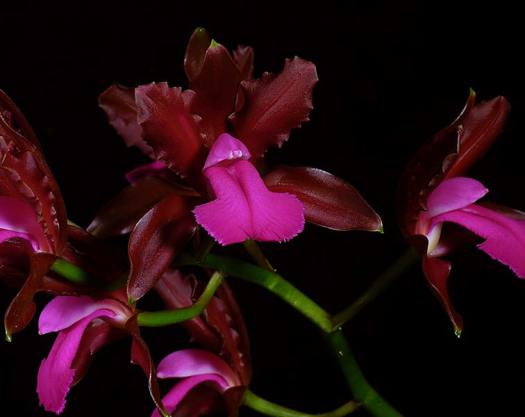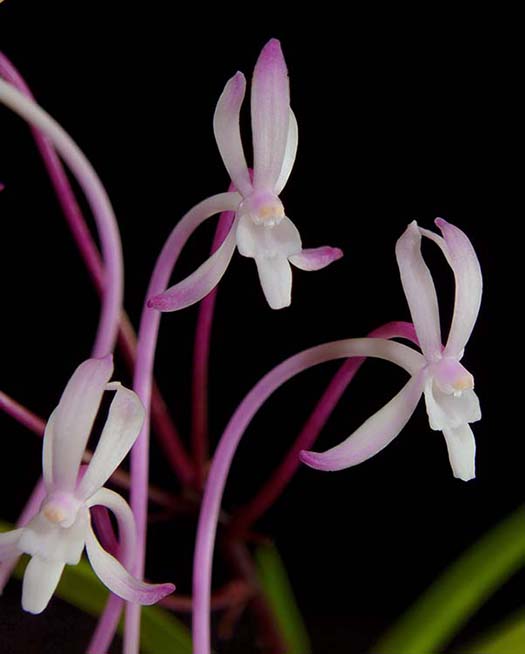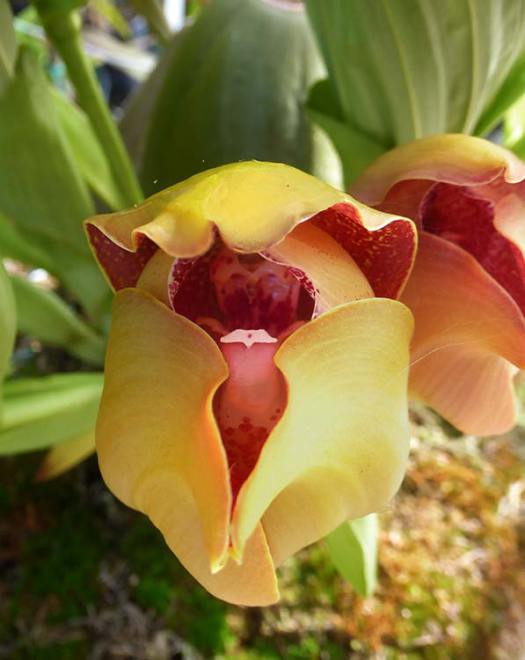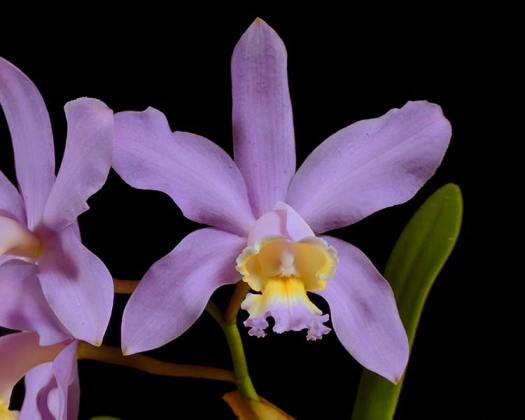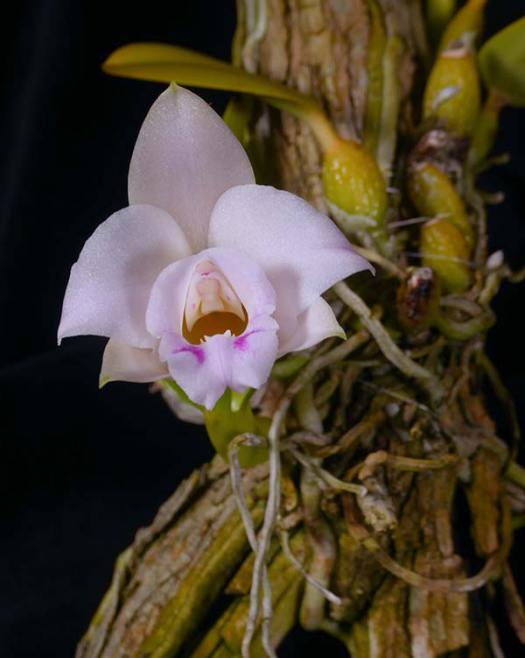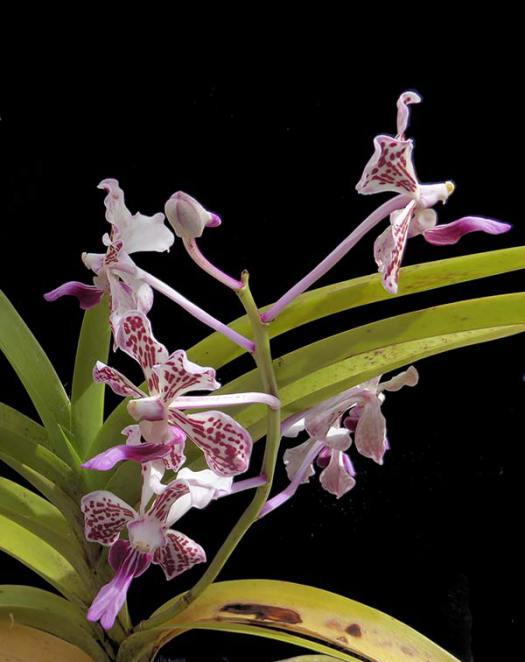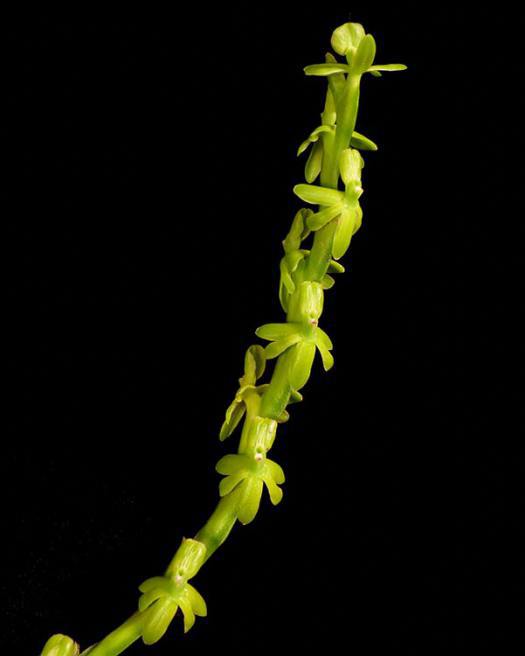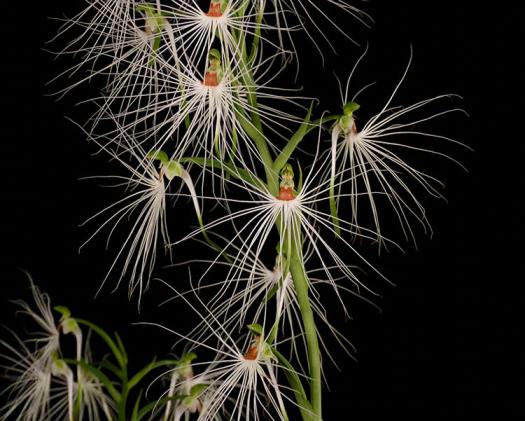September 2019
From Cindy Jepsen:
|
|
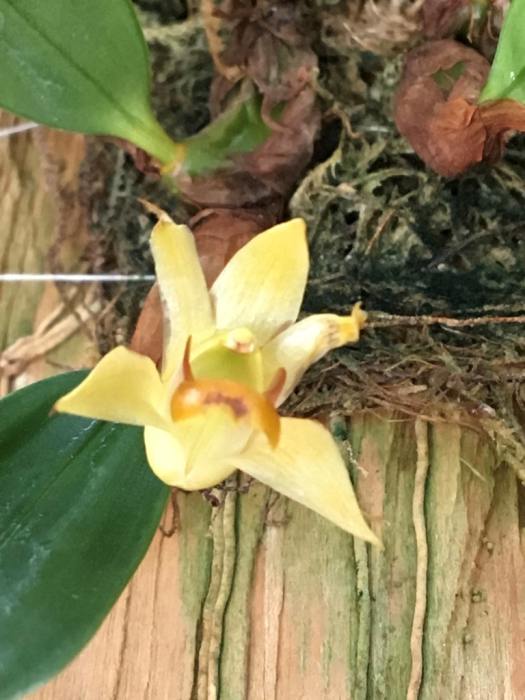 |
|
Epigeneium nakaharaeThis is a species from Taiwan that I’ve had for about 6 months. This is the second bloom for me. It’s mounted on a cedar plank with sphagnum moss. I keep it low in the greenhouse and fairly moist. Humidity is at 65% and I’ve been able to keep my high temps around 83°. I water with an RO system several times a week and feed weekly with MSU, seaweed and Superthrive on a rotating basis. |
|
 |
|
Oncidium (Tolumnia) speciesThis is an Oncidium (Tolumnia) that I’ve had just a few weeks, labeled Tolu. sylvestre, but based on the photos that I can find, I don't think that is the correct ID. It had a rough trip to Arizona and only to meet up with temperatures over 105° but with much hydration and TLC it rewarded me with a fast-growing spike and beautiful bloom. I keep it high in the greenhouse and water a couple of times per week. Humidity is at 65% and I’ve been able to keep my high temps around 83°. I water with an RO system several times a week and feed weekly with MSU, seaweed and Superthrive on a rotating basis. |
|
From Janet Wilson:
|
|
 |
|
Encyclia guatemalensisThis species hails from Mexico and Guatemala, among other countries. The plump pseudobulbs give an indication that this orchid can weather a beginner’s mistakes. It seems to tolerate dry, inland Orange County, but it is in the shade, outside, as temps climb into the 90s, and humidity sometimes dips below 10%. It would do well in full sun except in summer. |
|
From Scott McGregor:
|
|
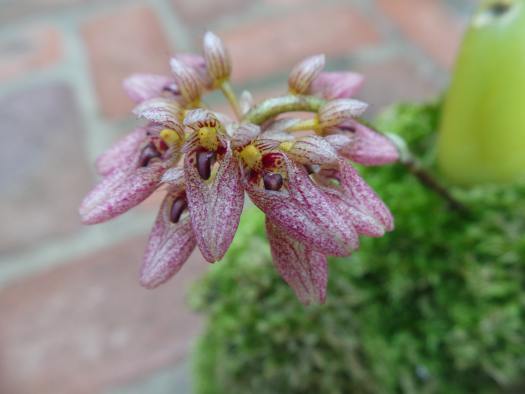
Bulbophyllum fenestratum (dentiferum cool type)One of the small umbel-inflorescence Cirrhopetalums that has since been reclassified to Bulbophyllum. Blooms reliably for me every August. |
|
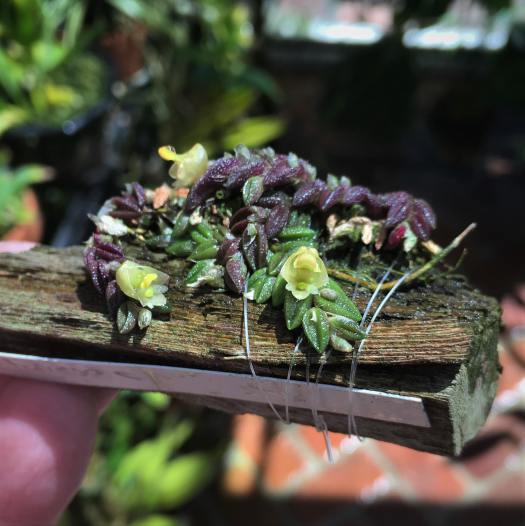 |
|
Dockrillia toressaeA creeping micro-mini from Australia. Probably best to grow this one into the biggest specimen possible, but at 1 square inch, mine has a ways to go… |
|

Encyclia/Prosthechea cochleataEveryone should have one of these—among the easiest orchids to grow, with long-lasting flowers. |
|
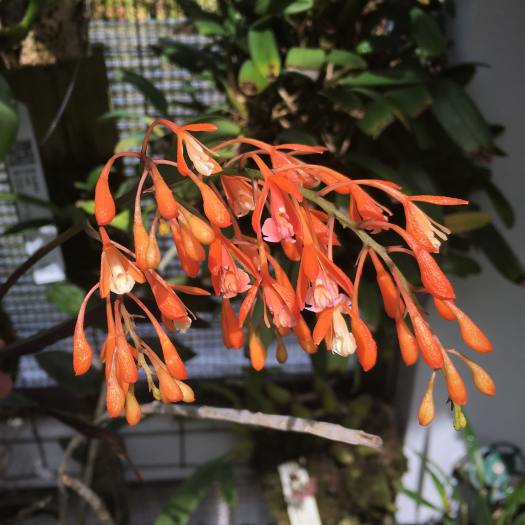
Epidendrum embreeiThe individual flowers aren’t that impressive on their own, but this one is easy to grow and the sprays of colorful and long-lasting flowers at the end of each cane make for a nice display. |
|
 Meiracyllium trinasutumFrom Central America, this one prefers it a bit warmer than our winters, but seems to still grow and flower pretty well. The flowers have a spicy scent. |
|
Pholidota speciesHere’s an unidentified species of Pholidota from Laos that I got from Andy Phillips in 2013. It blooms easily and while it isn’t especially colorful, it has a nice fragrance. Any suggestions on likely species much appreciated—many of them look quite similar. |
|
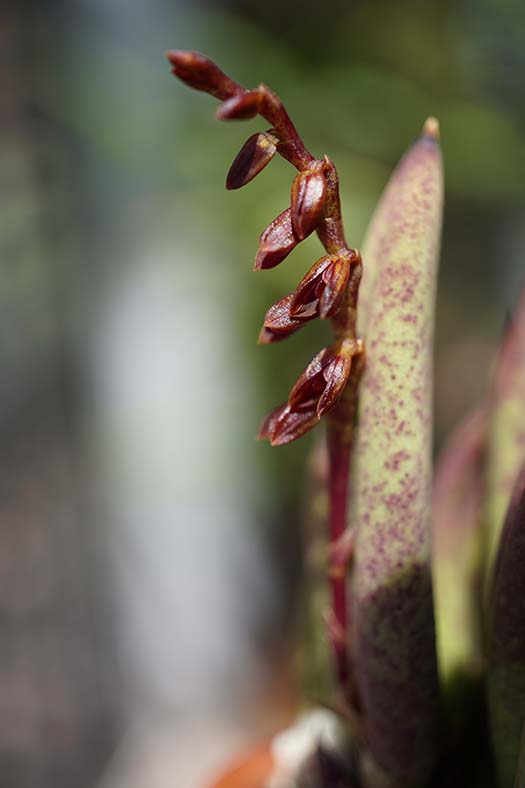 |
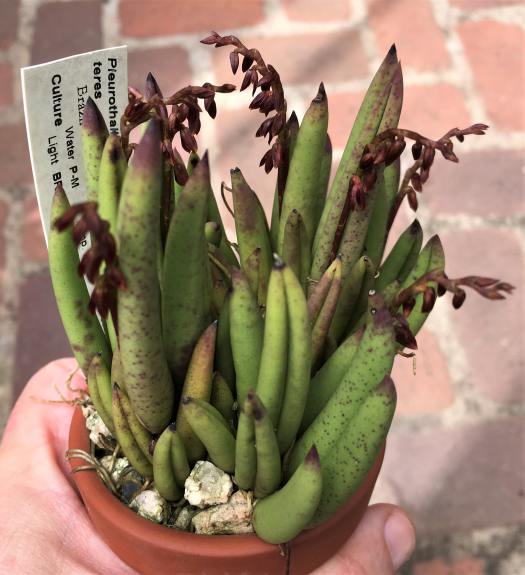 Pleurothallis teresHere’s one that might actually look better out of bloom than in bloom! Unlike almost every other Pleurothallis, this is a lithophytic, sun-loving, drought and heat-tolerant, terete-leaved, miniature cactus-like plant. Relatively indestructible! |
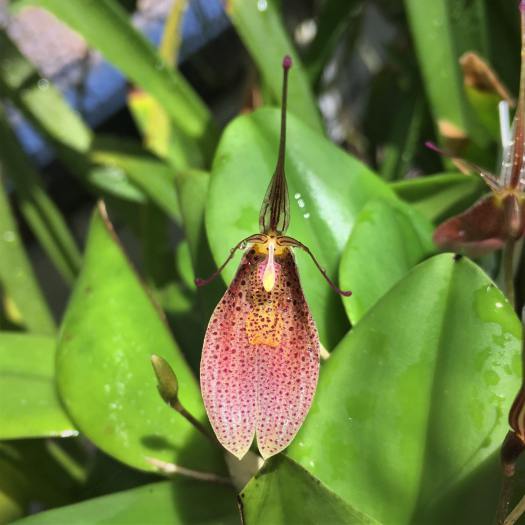
Restrepia contortaA cute Andean rain-forest species with highly variable flowers. |

Rhyncholaelia digbyanaAlways a fun one—fringe and a lemony scent. Likes it bright.
|

Sobralia maduroiA pretty, summer-blooming dwarf Sobralia (14-18” tall). S. maduroi is similar to S. undatocarinata (pic from last month for comparison), but the flowers are less open, flush blooms in clusters, and has more purple spotting in the lip. |
|
Sobralia callosaSobralia callosa is a one-day wonder, but quite a sight this morning with ten flowers at the ends of the cascading canes. Most sources say this one needs warmth, but seems to be happy outside for me. (It was great last month, but this bloom is even better!) I wonder if anyone has studied how orchids (and perhaps other plants) synchronize their blooms? I notice the one-day Sobralias and Diplocaulobiums seem to do this, with the latter managing to synch between two different plants that aren’t near each other in my growing area. That suggests something environmental, or plant ESP! |
|
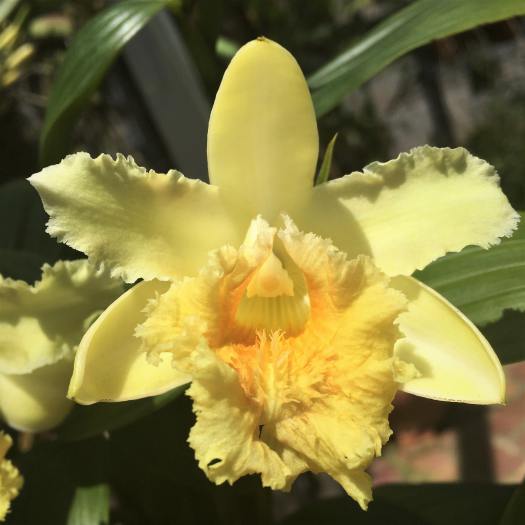
Sobralia xantholeucaA very cheerful Sobralia, only about 18” tall, with beautiful 4” yellow fringed flowers, with great form. I got this labelled as S. xantholeuca from Andy Phillips and wondered why it looked so different from another plant labelled the same (see photo to right). Andy suggested there was a fair amount of variation in the species—I like this fringed one the best by far! |
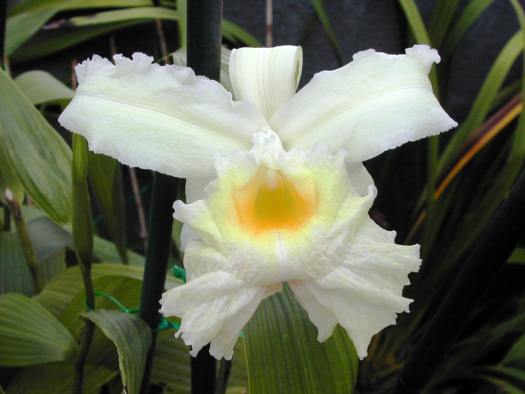 Sobralia xantholeuca (also) |
 |
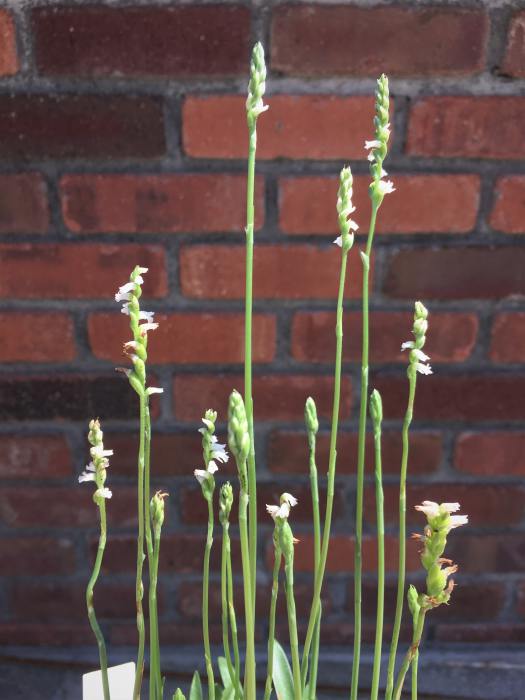 |
Spiranthes sinensisI saw this species offered as a compot on EBay, read that it naturally grows in clumps, and so bought it and just planted the lot of them, as is. They bloomed for me in March and now again in July. Not sure it would be worth growing just one of these, but in a mass they have a graceful feel, and they are fragrant as well. The genus is named for the spiral nature of how the flowers are arranged on the spike. They are terrestrial and S. odorata is a similar and widely distributed wildflower in the US, growing along stream banks and roadside ditches. |
|
From Roberta Fox:
|
|
Outside in the back yard - an especially prolific month |
|

Stanhopea tigrina var. nigroviolaceaThis one acted like it was ready to pop for almost a week, near the end of last month. Each morning I'd check it... still buds. Finally it did bloom beautifully, with a burst of perfume as it opened, a couple of days after I published the August page. The flowers only last 2 or maybe 3 days. If you take a vacation at the wrong time, you miss the whole thing and have to wait for another year. I have found that Stanhopeas do want to be somewhat shaded, and kept damp. If they dry out, they lose leaves and are set back. |
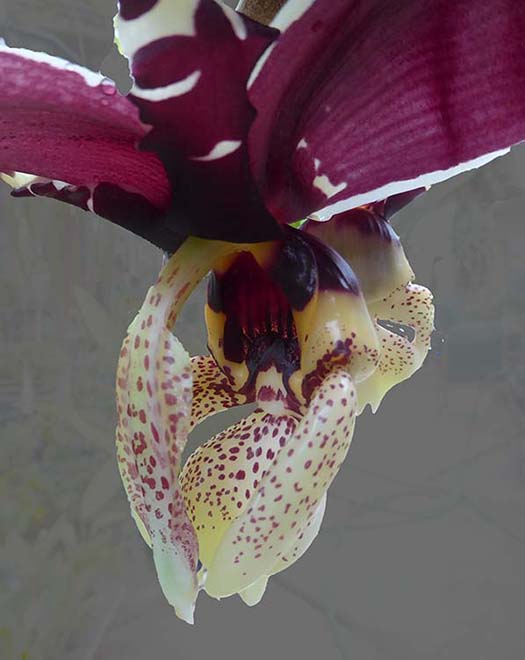 |
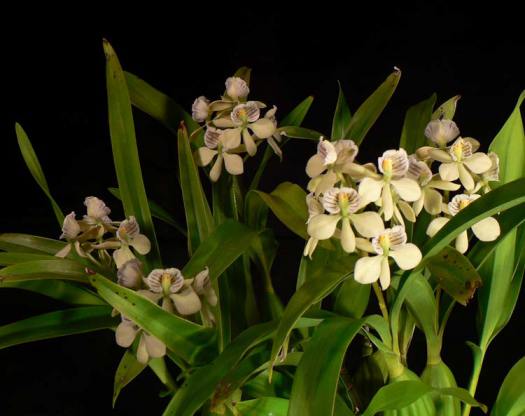 |
|
Encyclia(Prosthechea) radiataOne of the easiest, most forginging orchids one can grow. It tends to ramble. It is very fragrant. To me, it smells like wintergreen. |
|
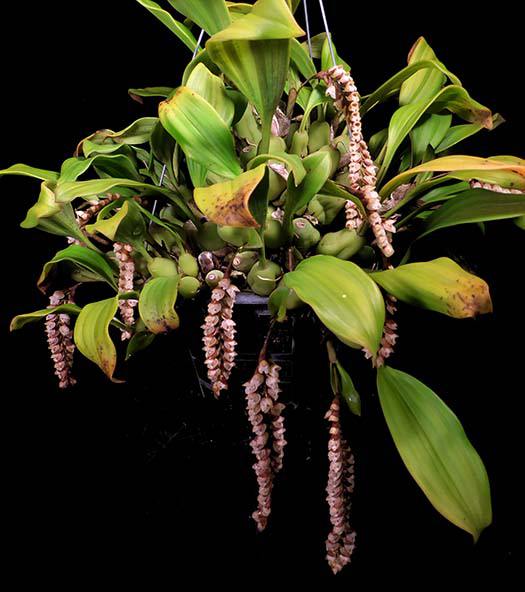 |
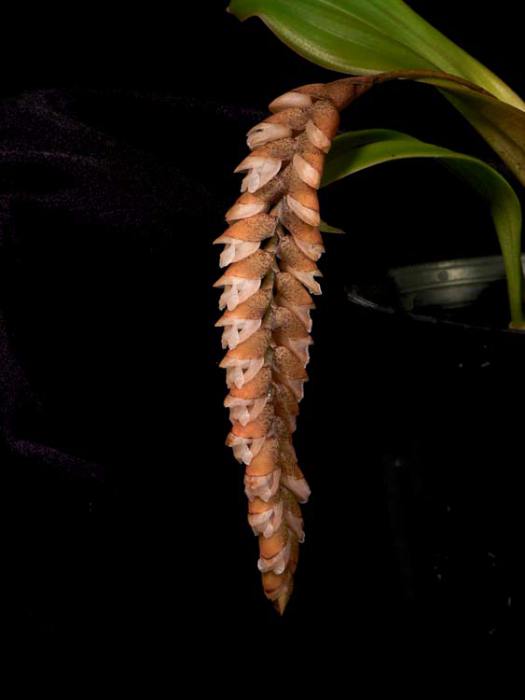
Pholidota imbricataJust before the flowers open, the inflorescence reminds me of a shrimp. Here you see the whole plant, the twisted inflorecence just before opening, and a closeup of the flowers |
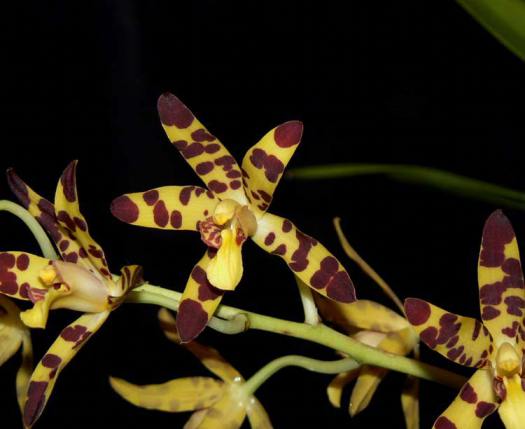
Ansellia africanaThis plant usually blooms in both spring and fall. |

Encyclia vitellinaThis plant started blooming in mid-June. It produces buds sequentially at the end of the inflorescence, prolonging the bloom time. The color says "notice me". It does prefer to stay on the cool side, so is probably easier to grow near the coast than inland. |
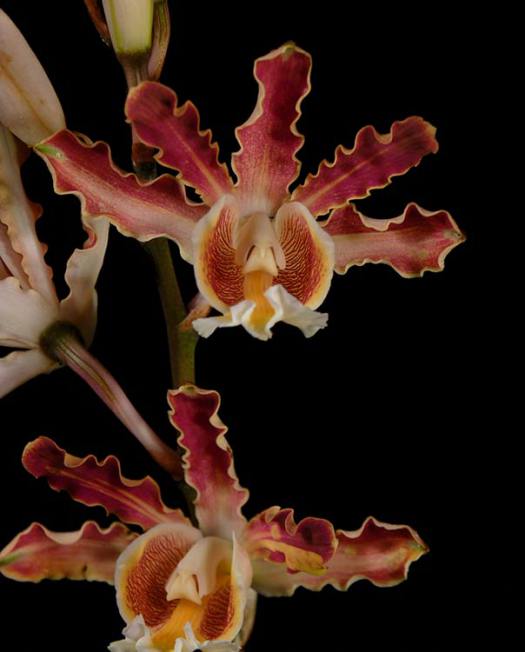 |
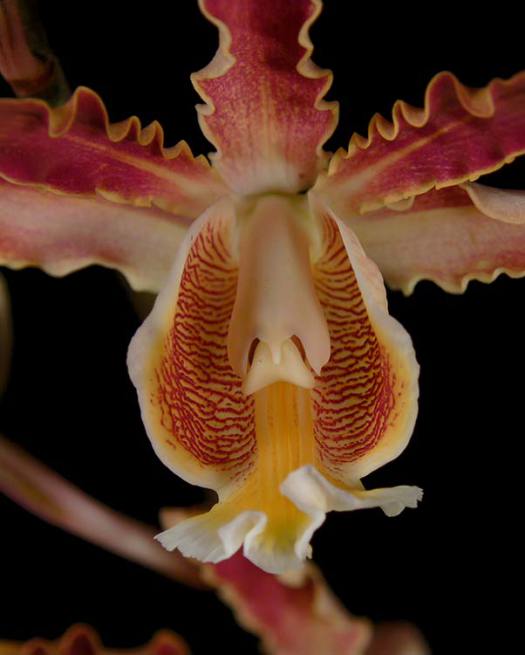 |
Myrmecophila (Schomburgkia) tibicinisThs species grows very bright, with the Laelia anceps. It does best mounted or in a basket. The genus Schomburgkia no longer exists - most of its members were classified as Laelia, and this distinct group with thick, hollow pseudobulbs became Myrmecophila (ant-lover) since in nature, ants make their home in those hollow spaces. |
|

Sobralia violaceaThe plant is of medium size, growths typically 3-4 feet. Unfortunately, this magnificent flower lasts only a day or so, typical of the genus. I got this plant bare-root, and it took awhile to get it established - Sobralias really resent the bare-rooting process necessary to import them. This grows fairly shady. It also seems to appreciate RO water. |
Cattleya bicolorThis is not a miniature... the slender pseudobulbs are close to 2 feet. However, the plant does stay within a reasonable footprint. I grow it with overhead protection from winter rain, but the temperature range is whatever it gets. The species has a range of color forms, with some having petals that greener. It's dramatic lip color, contrasting with the darker segments, that makes this species so attractive. |
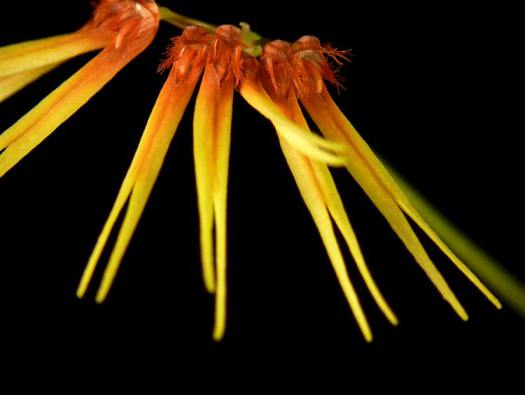
Bulbophyllum (Cirrhopetalum) hirundinisThis grows shady and damp. |
|
Neofinetia (Vanda) falcata 'Kohkakuden'The pristine white Neofinetia falcata is certainly charming, but I do love this dramatic pink form that years of selective breeding can produce. Perhaps it was the long, cool spring and early summer, but this is the best blooming of this plant for me. I have also moved all of my Neos into the area where they're getting RO water, and that seems to be inspring all of them as well.
|
|
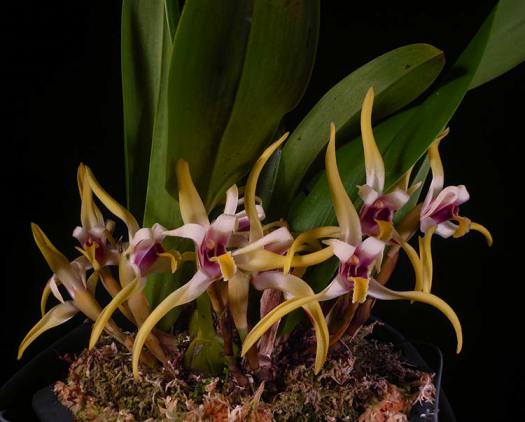 |
|
Maxillaria dilloniiThese flowers have very heavy sustance. It gets filtered sun to bright shade. |
|

Anguloa brevilabrisThis one is a beast... it is growing in a 15 inch wire basket. Pseudobulbs are 4 to 5 inches tall, 2 to 3 inches wide. I Used a layer of newspaper to line the basket to help contain the sphagnum moss. I also inverted a pot in the middle, to avoid a large, wet mass that tends to happen in such a large volume. The newspaper disintegrated in a couple of years, but by that time the moss had formed itself to the basket and been entangled with roots so that it didn't fall out. The flowers are quite fragrant. |
|

Laelia xanthinaThis is similar to Laelia grandis that I showed you last month. The flowers are somewhat smaller, but the colors are more saturated. |
|
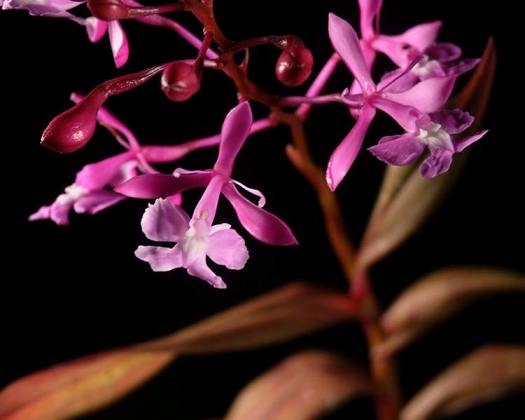
Epidendrum nanegalenseGrows on the shady side, with a lovely reddish blush on its foliage. |
|
 |
|
Lycaste schillerianaHere's another orchid with dramatic contrast. In the past, I usually got only two flowers, I think once I got three. It must love the cool weather... five this time. It does tend to like to bloo out the side or bottom of the basket. Lycaste and Stanhopea are both in the Maxillaria tribe. |
|

Maxillaria marginataRelated to Max. picta. The dark spots on the lip are almost velvety. |
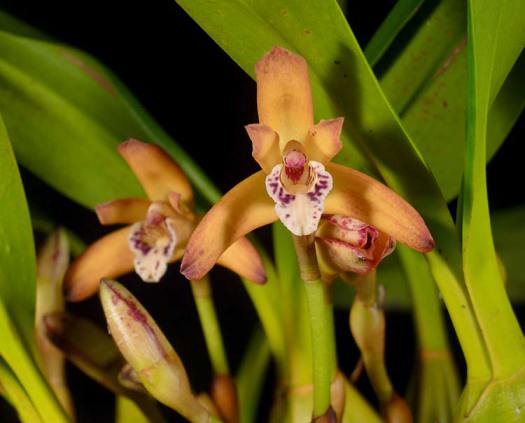
Maxillaria phoenicantheraAlso in the Max. picta group, very floriferous. |
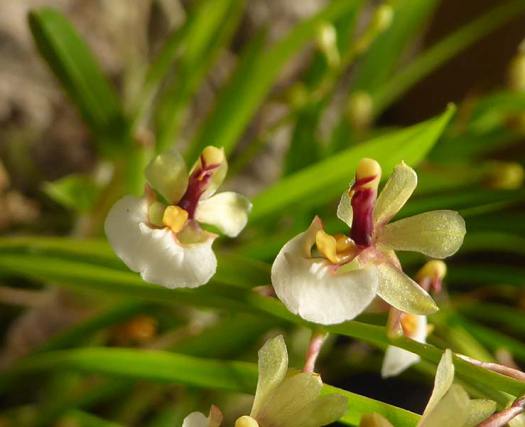
Ornithophora radicansPlenty of flower power here. Each flower is maybe 0.25 inches, but there are LOTS of them. There is little or no moss on the mount - this plant rambles freely. |
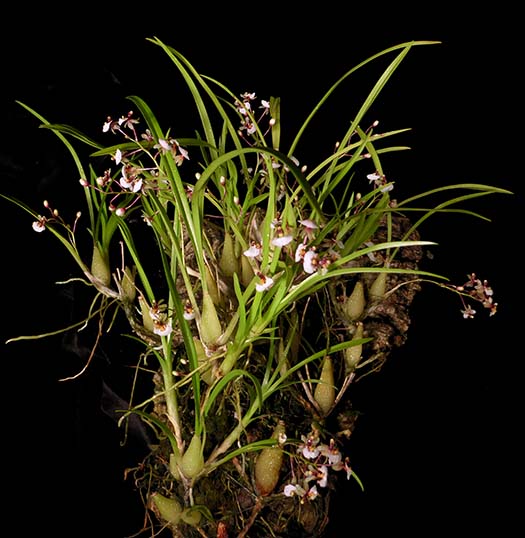 |

Epidendrum gnomusThe plant is smaller than Epi. porpax, the flowers are larger. Think of it as Epi. porpax on steroids. |
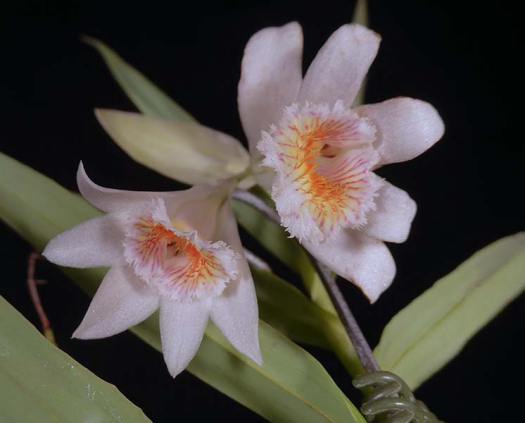
Thunia albaThis terrestrial is completely deciduous in the winter. It looks dead, until the new growth starts. I don't particularly dry it out. The flowers nod downward. To see the beautiful lip you have to tip the plant so that you can get underneath the flowers. |

Masdevallia colossusFlower is about 3 inches, with heavy substance. It can produce more than one flower successively on an inflorescence. |

Lockhartia bennettiiThe older leaves will die back, but the stem in the middle is still very much alive and will produce side growths. So even if part of it looks dead, it isn't. When a growth really is spent it will drop of its own accord. |

Haraella retrocallaThis is a miniature plant with flowers that are about 0.5 inch. It blooms successively on each inflorescence. It grows shady and damp, but seems to have no problem with cold. It is quite fragrant. |
|
 |
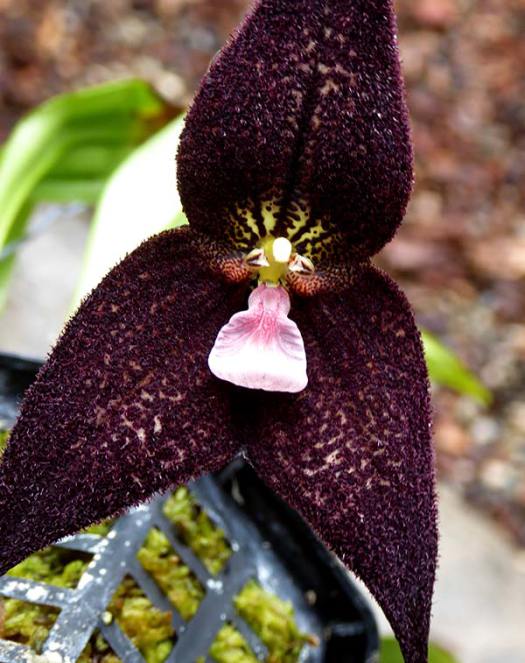 |
Dracula roezliiIn spite of the increasing heat, Draculas continue to bloom. This one does seem to be a little more heat-sensitive than Drac. bellerophon, partially closing by mid-morning, to open the next day. It produces several flowers sequentially on an inflorescence. |
|
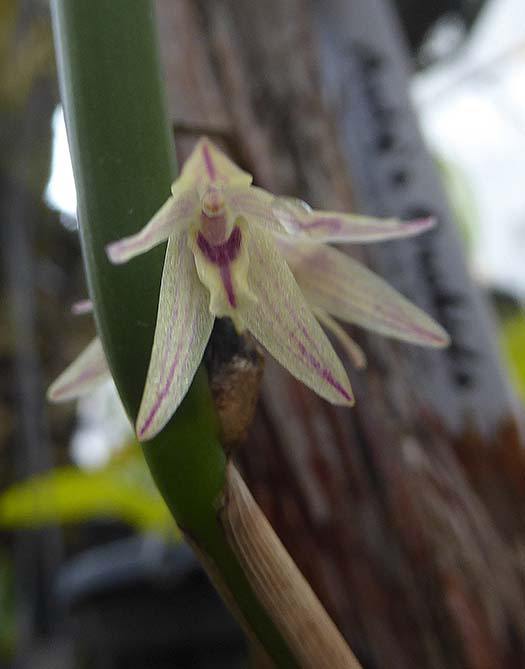 |
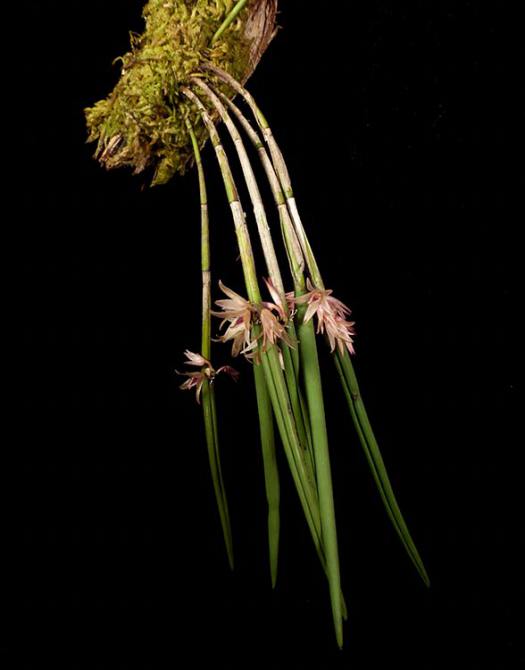 |
Octomeria praestansThe pseudobulb joins seamlessly to the leaf, but at that node the flowers emerge all around the terete leaf. It blooms repeatedly from the same location, several times a year. |
|
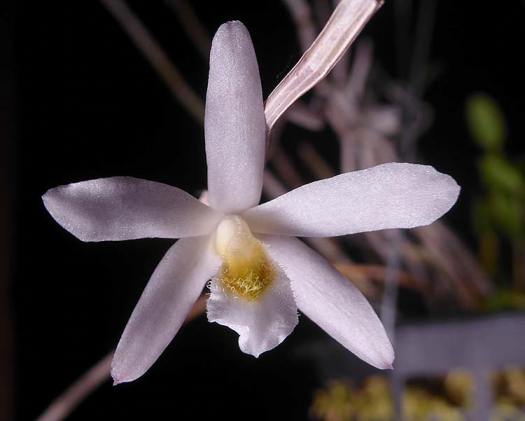 |
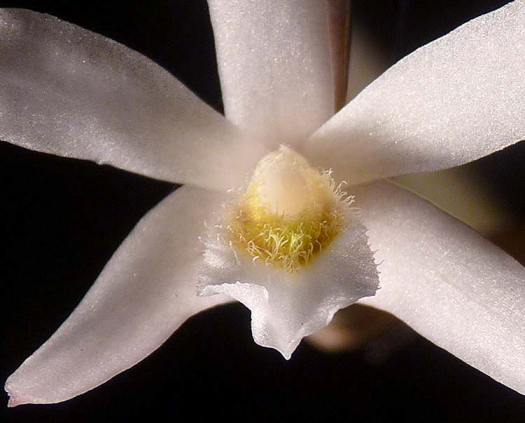 |
Dendrobium xichouenseThis Chinese dendrobium blooms on bare, dead-looking canes. The flowers are only about 1 inch, but the close-up photograph shows an intriguing, hairy lip. |
|
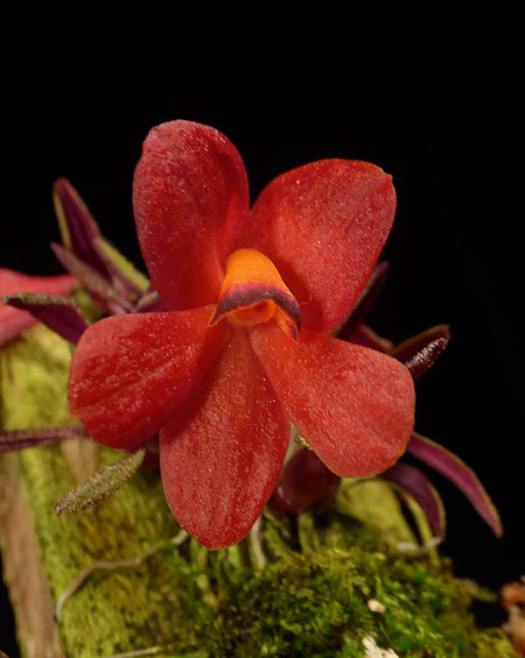 |
 |
Dendrobium cuthbersoniiI have been growing this plant for about a year and a half, and it shows signs of thriving. The species is difficult to grow - it needs pure water, and also hates heat. The last blooming, about 6 months ago, was darker red than the four (count them!) new flowers just opening, which seems to be very bright red. I'll show this again next month, when the flowers are fully opened, but to have this many flowers opening, all under my care, is really exciting. There is huge color variation, not only in the species, but apparently within a population. This was a selfing of an awarded cultivar, named "White Tips", which was pink with white tips on the petals. The progeny range from pink to various shades of magenta to red to orange. Few (I don't own one) look like the parent. |
|
In the greenhouse... |
|

Ceratochilus biglandulosusI love this miniature. The flower is bigger than the plant, and the name is bigger than both. From my research, I think that this species would do fine outside in terms of temperature, as long as it gets substantial humidity (and good water). I grow it in the greenhouse just to give it somewhat more even temperature, and that humidity. If I ever get another one (it grows really slowly) I might experiment, but don't want to mess with success. |
|
 |
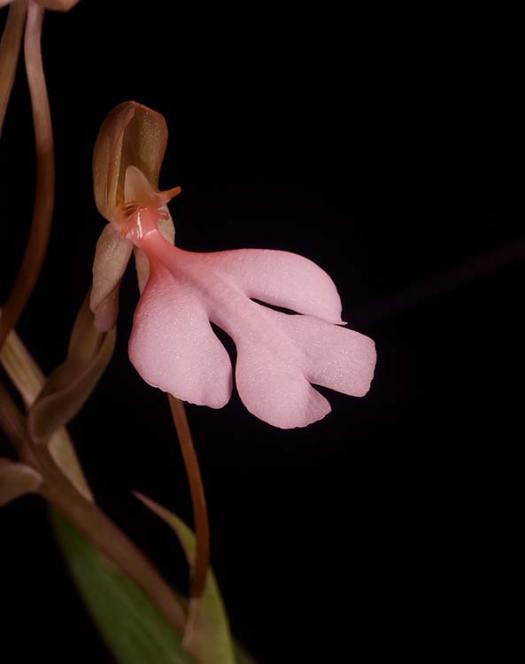 |
Habenaria rhodocheilaThere is a lot of color variation in this species. The name implies "red lip" and there are many red culivars, but also pink,peach, orange, etc. I have been growing this in the greenhouse, but based on my research, it could fine outside. It goes dormant in the winter, when it should get reduced water, but not stay completely dry. |
|
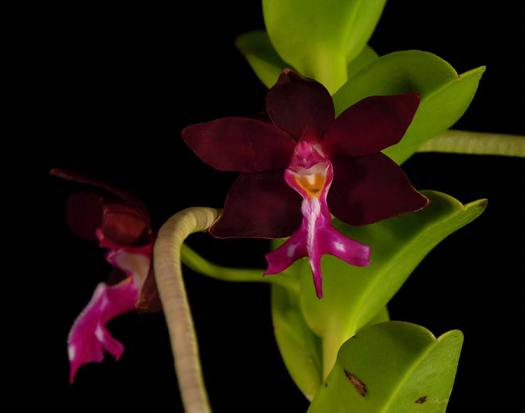
Trichoglottis atropurpureaThese are both now considered to be Trhchoglottis atropurpurea. One of these has a white patch on the sides of the lip, just a different population. These can get quite tall and rangy, branching widely. They mostly depend on the aerial roots, but to start a cutting it helps to tie it to a stick or other mount and put at least a few of the roots into a bark medium. It is fragrant. |
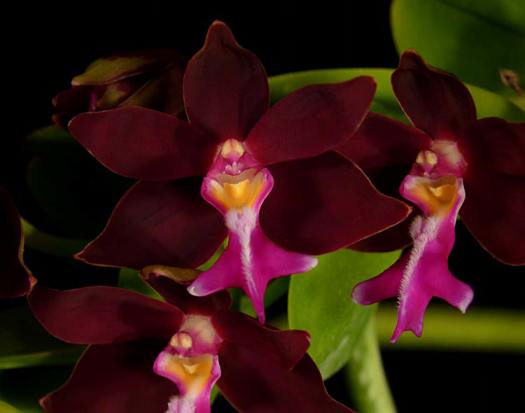 Trichoglottis brachiata var. philippinense (atropurpurea) |
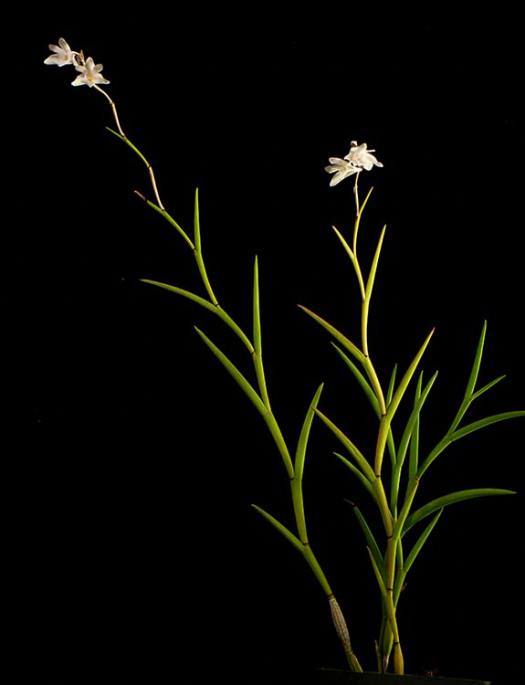 |
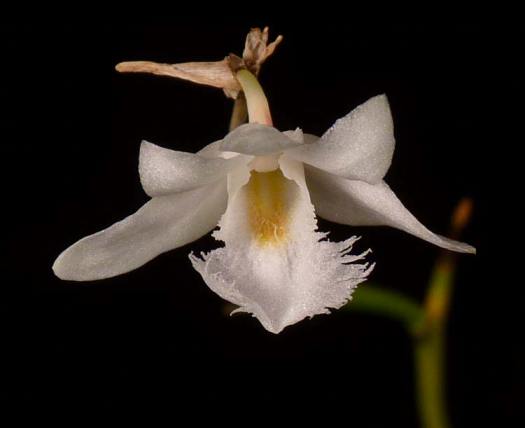
Den equitansThis species blooms many times on the same inflorecence. It can do so even if the spike looks dead. I don't cut anything until the whole growth is brown and shriveled. Unfortunately, the flowers don't last more than a few days, but it blooms frequently. |
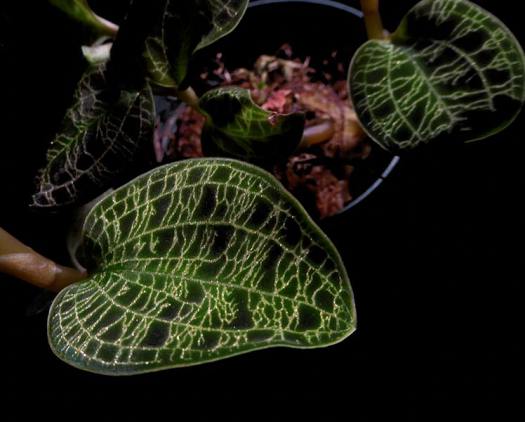 |
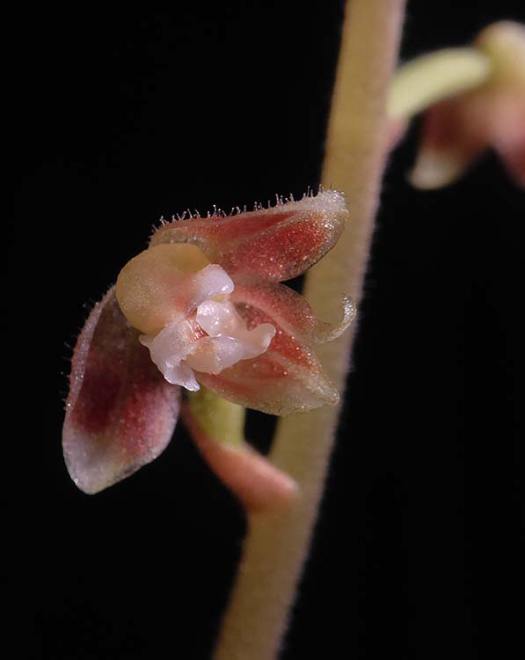 |
Macodes petolaThe flowers on this "jewel orchid" are very boring, spaced widely on a tall spike. The leaves, however are spectacular, especially if you look at them in sunlight - the velvety, dark green (almost black) leaves have light veins that sparkle like gold dust. I have had much better luck growing jewel orchids in the house, than in the greenhouse. They don't need much light, and seem to like the more even temperature. They can grow either in sphagnum moss or in a very open potting soil. Some species in this group have flowers that are a little more attractive, but it's the leaves that are the main attraction, so they are excellent house plants. |
|
